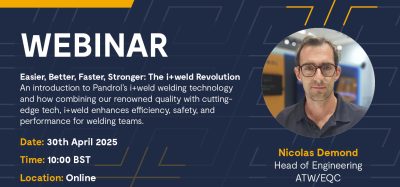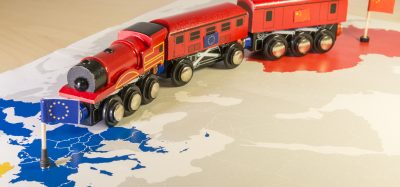Machine pool
Posted: 23 August 2005 | | No comments yet
For a company to survive in the hard-fought international railway technology market it must have access to modern, high-performance, reliable and economical machinery. However, high-performance machines are both very complex and expensive to purchase. The technical complexity determines the qualification and training needs of the operating and maintenance staff. The combination of staff training, maintenance facilities and the high purchasing costs mean only those companies with a good financial background can make investments of this size while avoiding irresponsible risks.
For a company to survive in the hard-fought international railway technology market it must have access to modern, high-performance, reliable and economical machinery. However, high-performance machines are both very complex and expensive to purchase. The technical complexity determines the qualification and training needs of the operating and maintenance staff. The combination of staff training, maintenance facilities and the high purchasing costs mean only those companies with a good financial background can make investments of this size while avoiding irresponsible risks.
For a company to survive in the hard-fought international railway technology market it must have access to modern, high-performance, reliable and economical machinery. However, high-performance machines are both very complex and expensive to purchase. The technical complexity determines the qualification and training needs of the operating and maintenance staff. The combination of staff training, maintenance facilities and the high purchasing costs mean only those companies with a good financial background can make investments of this size while avoiding irresponsible risks.
As a niche supplier the Sersa Group has a large number of specialist machines and procedures that can be used throughout Europe, both in country-specific markets or for individual projects, as a complement to overall services in the sector of railway technology.
The economical use of these technologies is almost always dependent on the number of orders (shifts) and on the revenue which can be generated.
For the Sersa Group it is therefore of great importance that machines can be made available internationally, i.e. across borders, and also nationally for different companies in the corresponding home market. To make sure this is possible all the specific requirements for a specific country must be checked before any new acquisition. In particular it must be clear in which markets the machine is going to be used, principally because subsequent adjustments are often very expensive. Unfortunately there are technical barriers in every European country making unrestricted (inter-opera table) use difficult and, in extreme cases, impossible. Here are some examples:
- Different railway supervision systems
- Different warning systems
- Different requirements in terms of authorisation with regard to technology and/or working procedures in individual countries
- Access to the track for the construction staff (e.g. in Great Britain and the Netherlands this is possible only after individual track access certification for personnel is obtained, etc.)
All this greatly increases the cost of acquisition and operation of modern track laying machines so the question of economic efficiency must always be asked. It is essential that the funds used are returned within a reasonable period of time. The company must be in a position to realise a reasonable return on investment so that future investment in new technologies can be maintained.
The number of situations where machines can be fully utilised in a particular country is often low. It is therefore necessary for the Sersa Group to allocate the high investment costs to only a limited number of clients in each individual market. The customers are not in a position to pay the resultant higher prices, limiting their access to progressive technologies. The obvious solution to this problem is to utilise the machines in several countries, or in one country, but with several clients. Thanks to higher shift numbers this leads to market prices which justify economical use.
Using some of the selected machines as an example, it will be clarified how, within the Sersa Group the international and national machine pools are going to be used to offer expensive carriers of technology with an outstanding price-performance ratio for the benefit of the customers.
International machine pool
Example 1: Serstar (mobile flash butt welding system)
These highly mobile welding systems are designed as 2-way vehicles able to travel both on the road and also on track. Their huge capacity and flexibility compared with conventional rail welding procedures make it possible to carry out high productivity welding in a short time. Consistent high quality that can be checked at any time during the welding process is also ensured. To carry out such high productivity requires very well organised construction sites with intelligent logistics offering high numbers of welds. This type of worksite usually occurs during large project work where high productivity requirements ensure the full potential of the machine is realised.
As a solution these machines are administrated centrally in a pool. The teams of operators are able and, correspondingly trained, to use the mobile flash butt welding systems throughout Europe. The high degree of utilisation achieved in this manner enables the Sersa Group to offer its customers this product at an ideal price-performance ratio. Here are some of the main technical details:
- Area of standard application: welding of vignol rails from 46kg/m to 65kg/m
- Technical capacity of the welding machine AMS 60/210 Supraflex: up to 12 welds per hour
- Travel speed on road: 85km/h
- Travel speed by rail: 50km/h (in both directions of travel)
- Complete vehicle weight: 34.50t
- Total length: 12.00m
- Width: 2.50m
- Height: 3.60m
Example 2: Rail milling machine SF03-FFS
The re-profiling of rails is of vital importance for ensuring both a long service life and driving comfort. So far this work has been done by means of rail grinding. Rail milling has distinct advantages compared with this technology:
- Clearly higher efficiency of the machine (large stock removal with one vehicle pass)
- Realisation of high profile accuracy
- No flying sparks, so it is not necessary to cover cable ducts, among other things
- No formation of dust, which is a particularly positive development in tunnels
- Lower acoustic emissions
With the introduction of the latest generation of rail milling machines (made by Linsinger) by Alpha Rail Team GmbH, the Sersa Group meets the requirements of its customers who no longer wanted to accept the disadvantages of conventional rail treatment, i.e. grinding.
In many cases the exclusive use of this technology in only one country can not enable full utilisation and capacity which leads to uneconomical working practices. What is actually required is to plan time frames in the closest possible co-operation with customers in order to determine exactly when and where these machines are to be used so that all markets can enjoy the latest technologies at justifiable prices.
Sersa Group employees understand the requirements of their customers down to the smallest detail and provide canvassing and consultation on site. Dispatching and operation of the machines with the corresponding know-how comes from the central European machine pool. However, the rail milling machine was given a technical design which will ensure that authorisation is possible in most European countries and that this can be achieved without a great deal of expense and within a justifiable period of time. Here are some of the main technical details:
- Vehicle weight (mass) with full containers (fuel, chippings, etc.): maximum of 120t
- Length over buffer: 23.80m
- Maximum speed (travelling alone or towed): 100km/h
- Operating speed: 0-25m/minute
- Machining depth when milling on the running surface: 0.3-1.5mm
- Machining depth when milling on the running edge: maximum of 5mm
- Environmentally-friendly diesel engine with particulate filter
Example 3: Just-in-time delivery
In Switzerland, more than three-quarters of all Switch and Crossing deliveries to the federal railways are already made using the ‘just-in-time’ system. The Switch and Crossing components are pre-assembled at the manufacturing plant, transported to the construction site on special angled transport trucks (WTW) and then installed immediately. The redundant components are removed and loaded onto the WTW where they are transported for reconditioning or disposal.
This procedure, developed by the Sersa Group in close co-operation with the Swiss Federal Railways (SBB), is offered by the company Euroswitch AG, which is a joint venture between the Sersa Group and the SBB. An added bonus of the ‘just-in-time’ system is that, not only are the WTW vehicles and staff provided for uses in Europe, it is also possible for customers themselves to acquire the knowledge required for the procedure. This is a service which goes well beyond the conventional provision of WTW vehicles from a machine pool.
Here are some of the main technical details:
- Length over buffer: 25.46m
- Distance platform can be moved sideways: 0.50m
- Loading length without spacer car: 24.40m
- Maximum sleeper length when installed: 4.40m
- Maximum sleeper length when transportable (at an angle): 4.80m
- Unloaded weight: 40.00 tonnes
- Cargo capacity: 40.00 tonnes
National machine pool
In the national machine pool there are two different paths for the Sersa Group to follow, and these are explained in more detail below.
Machine and rental pool CH and D
As well as the international machine pool, the Sersa Group also has central dispatching locations for all special machines for both the Swiss and German markets. The aim here is for these to be used by the companies of the Sersa Group in Switzerland or Germany and also by the construction department of the individual Railway Authorities (via rental).
Overhead contact line construction machines
Immediate uses in the overhead contact line installation and maintenance are a main priority. For the maintenance and repairs of the overhead contact lines it is very important that the machines can be operated safely with as few as possible employees and resources. Most of the overhead contact line trucks used today (small cranes, lifting platforms, etc.) need a separate means of traction including a locomotive driver for transport. This led to the desire to obtain vehicles which cover a range of uses which is as comprehensive as possible and have their own traction drive.
The SBB, like most big companies, now has complicated time-consuming purchasing procedures, so it takes a correspondingly long time until an urgently needed machine is available. Sersa has taken on this task and within the shortest possible time, i.e. within a year, purchased seven crane trucks and two lift trucks and provided the SBB with these for rental. If they are not needed they are used by the Sersa Group’s own overhead contact line specialists (the company Benkler AG). Here are some of the main technical details:
Lift truck:
- Vehicle weight: 36t
- Length over buffer: 13,860mm
- Travel speed in own traction: 0-30km/h
- Travel speed towed: 100km/h
- Number of lifting platforms: 1 platform split into three parts (2 x 1/4 and 1 x 1/2 platform)
- Distance 1/4 platform can be moved to the side: up to 3.00m
- Maximum working height (platform floor): 1/2 platform: 4,480mm, 1/4 platform: 7,300mm
- Hydraulic catenary wire and overhead traction line pushing unit, lifting height: 8,000mm above SOK
- Overhead traction line measuring device can be remote controlled from the cab including camera
- Environmentally friendly diesel engine with particulate filter
Crane truck:
- Vehicle weight: 40t
- Length over buffer: 13,860mm
- Travel speed in own traction: 0-30km/h
- Travel speed towed: 100km/h
- Operating range of platform for lifting persons: sideways up to 13.00m; maximum working height: 15.10m
- Operating range of loading crane: sideways up to: 12.50m; maximum height: 15.00m
- Crane type: Palfinger PKR 160 C; platform for lifting persons: Palfinger PA 240
- Environmentally friendly diesel engine with particulate filter
Rail cranes with the example of the Kirow KRC 1200
A long-standing client of the Sersa Group presented the problem of handling bridge components of a greater weight than their own medium capacity cranes. The Sersa Group already had similar cranes in its pool so immediately purchased a Kirow KRC 1200 which is perfectly suited for the client’s application. The resultant multiple use has balanced out the additional costs of the purchase as far as possible and at the same time enables a much more comprehensive range of use. Here are some of the main technical details:
- Length over buffer: 15.00m
- Service weight with vehicles attached together: 128t
- Maximum operating range: 8.0-28.0m (2x telescope)
- Load capacity: 1200mt or 150t, 1.0m from buffer
- Counterweights: 2 x 25t, hydraulically lift
- Two superposed rotating assemblies which can be uncoupled and enable a high load capacity without impairing the adjacent track profile when ejecting the counterweight
- Environmentally friendly diesel engine with particulate filter
Co-operation with other companies
There are major advantages of working in close cooperation with other specialist construction companies and utilising their machinery in conjunction with the machinery of the Sersa Group. This will be explained using the following two examples.
J. Müller AG, CH-8307 Effretikon
J. Müller AG has a comprehensive range of track laying machinery for track maintenance – equipped with the latest measuring systems – (tamping machines, ballast regulators, etc.) both on normal track and also metre-wide tracks. Because of the high transport costs, it makes little sense here to take Sersa’s own machines from Germany to Switzerland. For this reason we use the services of Metrico (European providers of comprehensive construction services for metre-wide tracks), providing the Sersa Group with a close co-operation with the company Müller which provides its range of machines – which is probably unique in Europe – for the construction and maintenance of metre-wide railway tracks.
Vanoli AG, CH-8800 Thalwil
During excavation and ballast cleaning, material must be picked up and taken away from the construction site as quickly and efficiently as possible. Together with Matisa SA in Crissier the Sersa Group developed and built the so-called OLUS (Old Material Loading Unit Sersa). The standard version of the vehicle corresponds as far as possible with the MFS 40 from Plasser & Theurer. The company Vanoli AG, Thalwil has various vehicles of this type. Quick and un-bureaucratic access to the vehicles for both sides means both companies can now cover the necessary customer requirements with as few vehicles as possible and therefore with lower investment volume. Some technical details of the AVES Plus:
- Length over buffer: 19,900mm
- Dead weight: 64t
- Cargo capacity: 40m3
- Power transmission: rail and caterpillar tracks are powered
- Speed: travelling alone: rail: 0-5km/h, caterpillar 0-2km/h
- Speed when being towed: 100km/h
- Auxiliary travelling gears which can be lowered and moved sideways enable simple lowering into the excavation pit and quick re-railing
- Environmentally friendly diesel engine with particulate filter
Conclusion
Large investments are worthwhile as long as maximum utilisation, and therefore, an attractive price-performance ratio on the market can be ensured. Here it is necessary to move away from familiar paths and to look for co-operation not only with customers and consolidated companies but also with competitors in order to create a situation which, ultimately, will be profitable for everyone.






